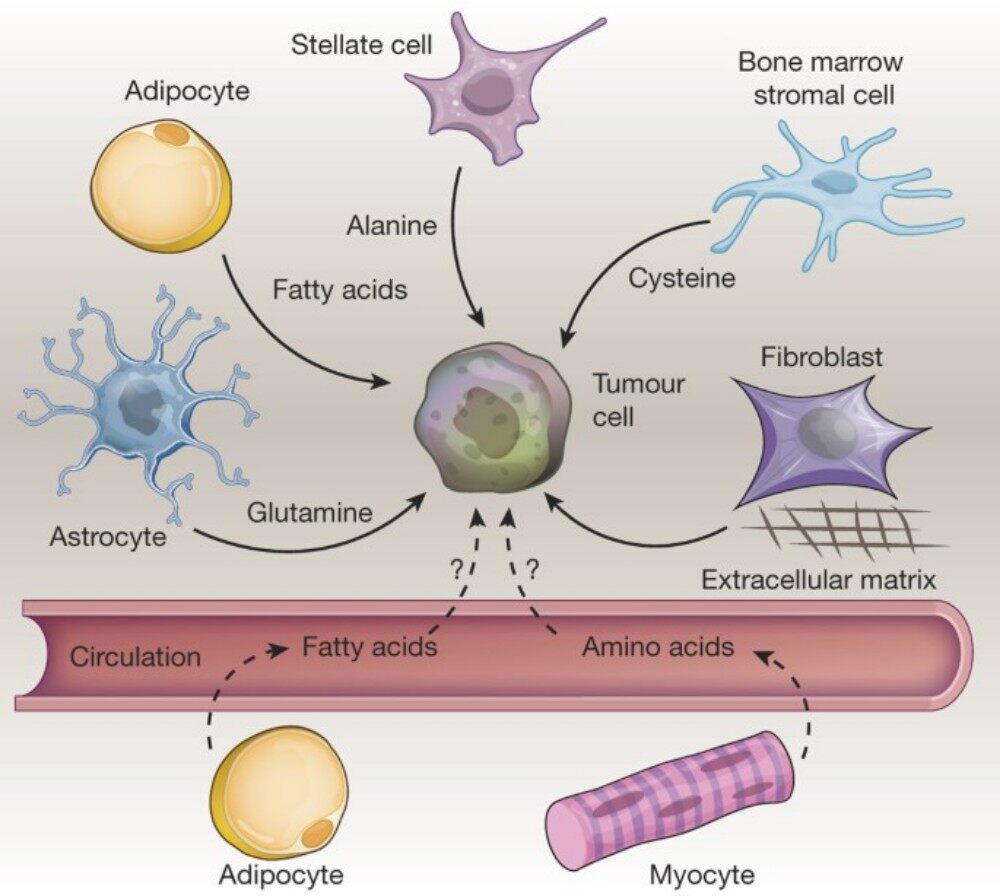Every organism must find in its environment all of the substances required for energy generation and cellular biosynthesis. The chemicals and elements of this environment that are utilized for bacterial growth are referred to as nutrients or nutritional requirements. Many bacteria can be grown the laboratory in culture media which are designed to provide all the essential nutrients in solution for bacterial growth. Bacteria that are symbionts or obligate intracellular parasites of other cells, usually eucaryotic cells, are (not unexpectedly) difficult to grow outside of their natural host cells. Whether the microbe is a mutualist or parasite, the host cell must ultimately provide the nutritional requirements of its resident.
Many bacteria can be identified in the environment by inspection or using genetic techniques, but attempts to isolate and grow them in artificial culture has been unsuccessful. This, in part, is the basis of the estimate that we may know less than one percent of all procaryotes that exist.
The Major Elements
At an elementary level, the nutritional requirements of a bacterium such as E. coli are revealed by the cell’s elemental composition, which consists of C, H, O, N, S. P, K, Mg, Fe, Ca, Mn, and traces of Zn, Co, Cu, and Mo. These elements are found in the form of water, inorganic ions, small molecules, and macromolecules which serve either a structural or functional role in the cells. The general physiological functions of the elements are outlined in Table 1.
Table 1. Major elements, their sources and functions in bacterial cells.
| Element | % of dry weight | Source | Function |
| Carbon | 50 | organic compounds or CO2 | Main constituent of cellular material |
| Oxygen | 20 | H2O, organic compounds, CO2, and O2 | Constituent of cell material and cell water; O2 is electron acceptor in aerobic respiration |
| Nitrogen | 14 | NH3, NO3, organic compounds, N2 | Constituent of amino acids, nucleic acids nucleotides, and coenzymes |
| Hydrogen | 8 | H2O, organic compounds, H2 | Main constituent of organic compounds and cell water |
| Phosphorus | 3 | inorganic phosphates (PO4) | Constituent of nucleic acids, nucleotides, phospholipids, LPS, teichoic acids |
| Sulfur | 1 | SO4, H2S, So, organic sulfur compounds | Constituent of cysteine, methionine, glutathione, several coenzymes |
| Potassium | 1 | Potassium salts | Main cellular inorganic cation and cofactor for certain enzymes |
| Magnesium | 0.5 | Magnesium salts | Inorganic cellular cation, cofactor for certain enzymatic reactions |
| Calcium | 0.5 | Calcium salts | Inorganic cellular cation, cofactor for certain enzymes and a component of endospores |
| Iron | 0.2 | Iron salts | Component of cytochromes and certain nonheme iron-proteins and a cofactor for some enzymatic reactions |
Trace Elements
Table 1 ignores the occurrence of trace elements in bacterial nutrition. Trace elements are metal ions required by certain cells in such small amounts that it is difficult to detect (measure) them, and it is not necessary to add them to culture media as nutrients. Trace elements are required in such small amounts that they are present as “contaminants” of the water or other media components. As metal ions, the trace elements usually act as cofactors for essential enzymatic reactions in the cell. One organism’s trace element may be another’s required element and vice-versa, but the usual cations that qualify as trace elements in bacterial nutrition are Mn, Co, Zn, Cu, and Mo.
Carbon and Energy Sources for Bacterial Growth
In order to grow in nature or in the laboratory, a bacterium must have an energy source, a source of carbon and other required nutrients, and a permissive range of physical conditions such as O2 concentration, temperature, and pH. Sometimes bacteria are referred to as individuals or groups based on their patterns of growth under various chemical (nutritional) or physical conditions. For example, phototrophs are organisms that use light as an energy source; anaerobes are organisms that grow without oxygen; thermophiles are organisms that grow at high temperatures.
All living organisms require a source of energy. Organisms that use radiant energy (light) are called phototrophs. Organisms that use (oxidize) an organic form of carbon are called heterotrophs or (chemo)heterotrophs. Organisms that oxidize inorganic compounds are called lithotrophs.
The carbon requirements of organisms must be met by organic carbon (a chemical compound with a carbon-hydrogen bond) or by CO2. Organisms that use organic carbon are heterotrophs and organisms that use CO2 as a sole source of carbon for growth are called autotrophs.
Thus, on the basis of carbon and energy sources for growth four major nutritional types of procaryotes may be defined (Table 2).
Table 2. Major nutritional types of procaryotes
| Nutritional Type | Energy Source | Carbon Source | Examples |
| Photoautotrophs | Light | CO2 | Cyanobacteria, some Purple and Green Bacteria |
| Photoheterotrophs | Light | Organic compounds | Some Purple and Green Bacteria |
| Chemoautotrophs or Lithotrophs (Lithoautotrophs) | Inorganic compounds, e.g. H2, NH3, NO2, H2S | CO2 | A few Bacteria and many Archaea |
| Chemoheterotrophs or Heterotrophs | Organic compounds | Organic compounds | Most Bacteria, some Archaea |
Almost all eucaryotes are either photoautotrophic (e.g. plants and algae) or heterotrophic (e.g. animals, protozoa, fungi). Lithotrophy is unique to procaryotes and photoheterotrophy, common in the Purple and Green Bacteria, occurs only in a very few eucaryotic algae. Phototrophy has not been found in the Archaea, except for nonphotosynthetic light-driven ATP synthesis in the extreme halophiles.

